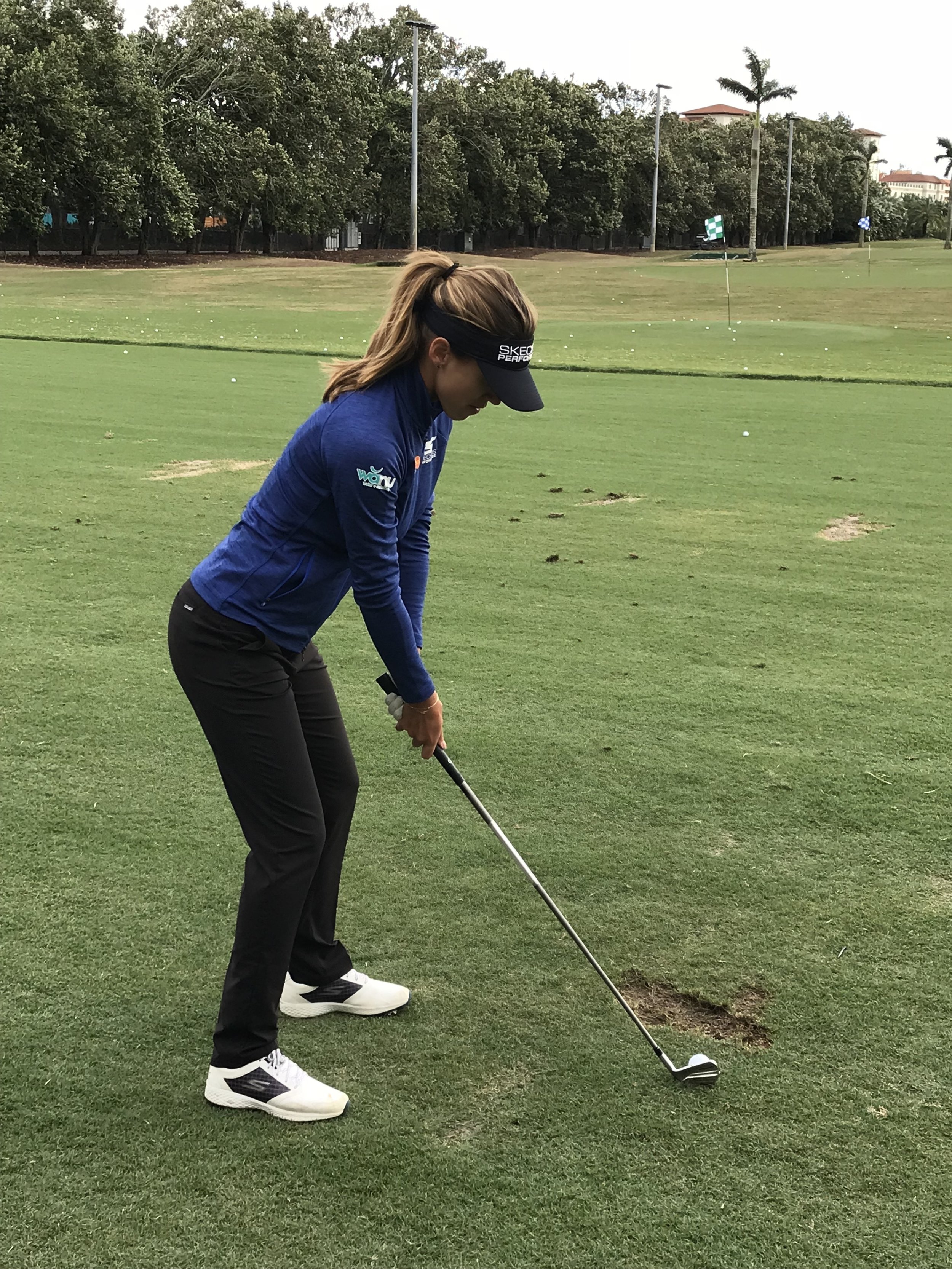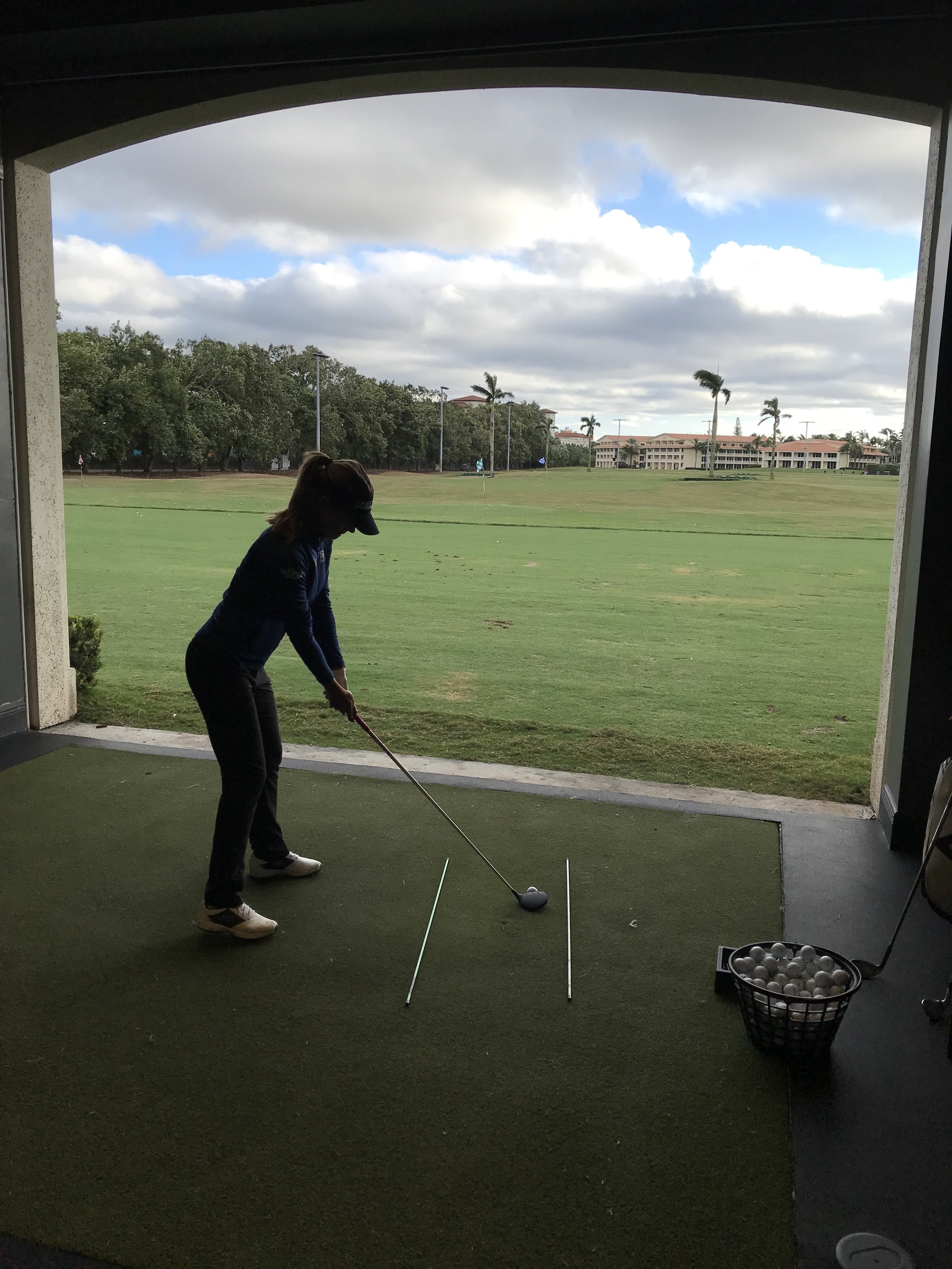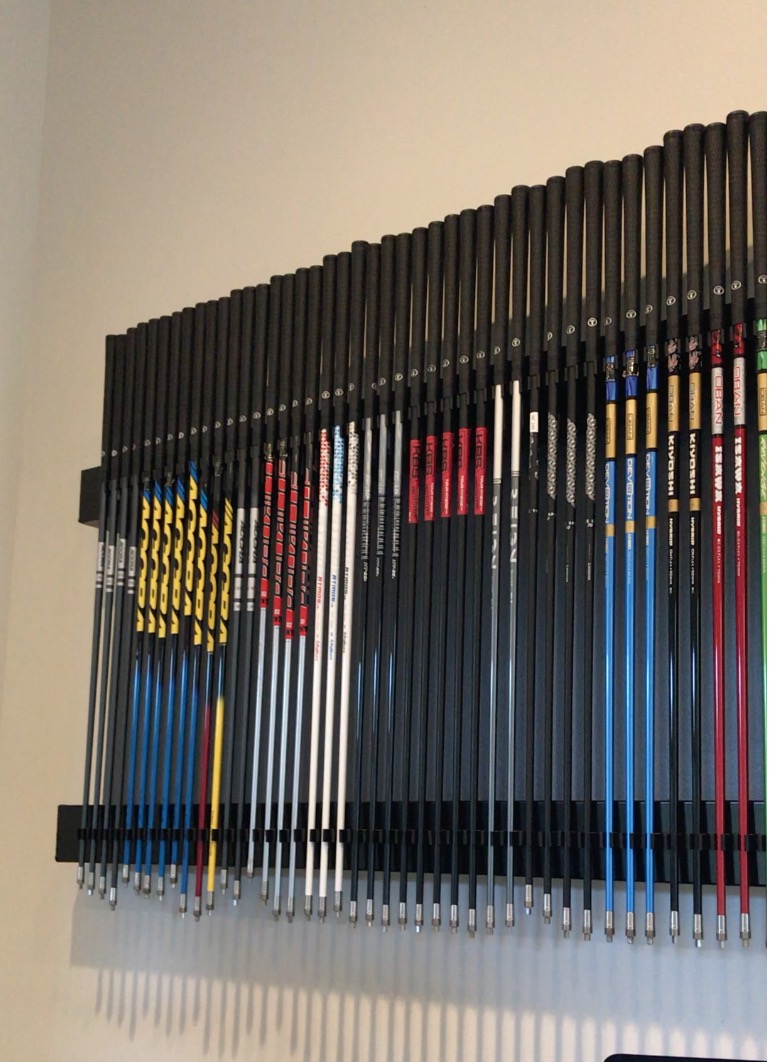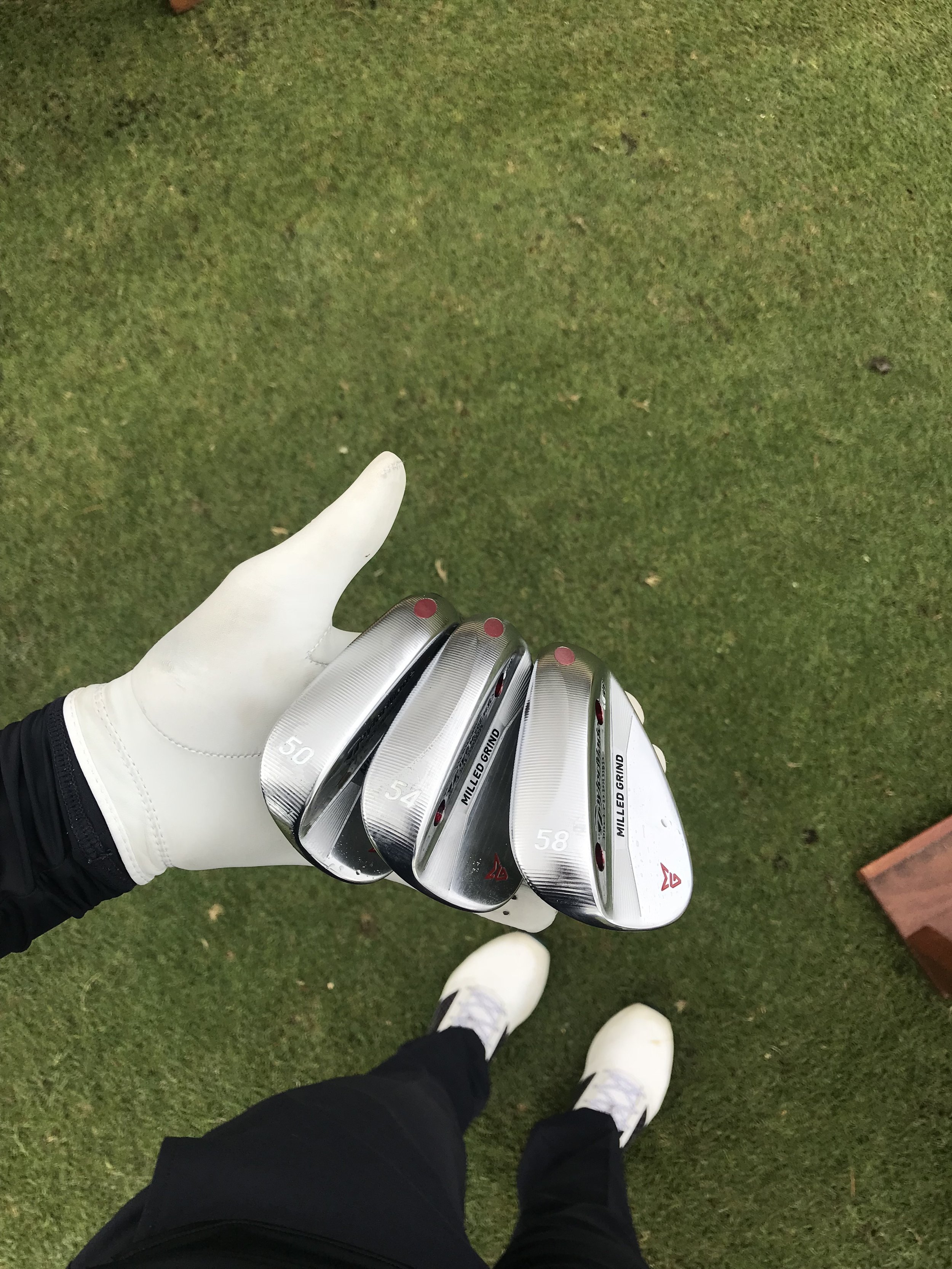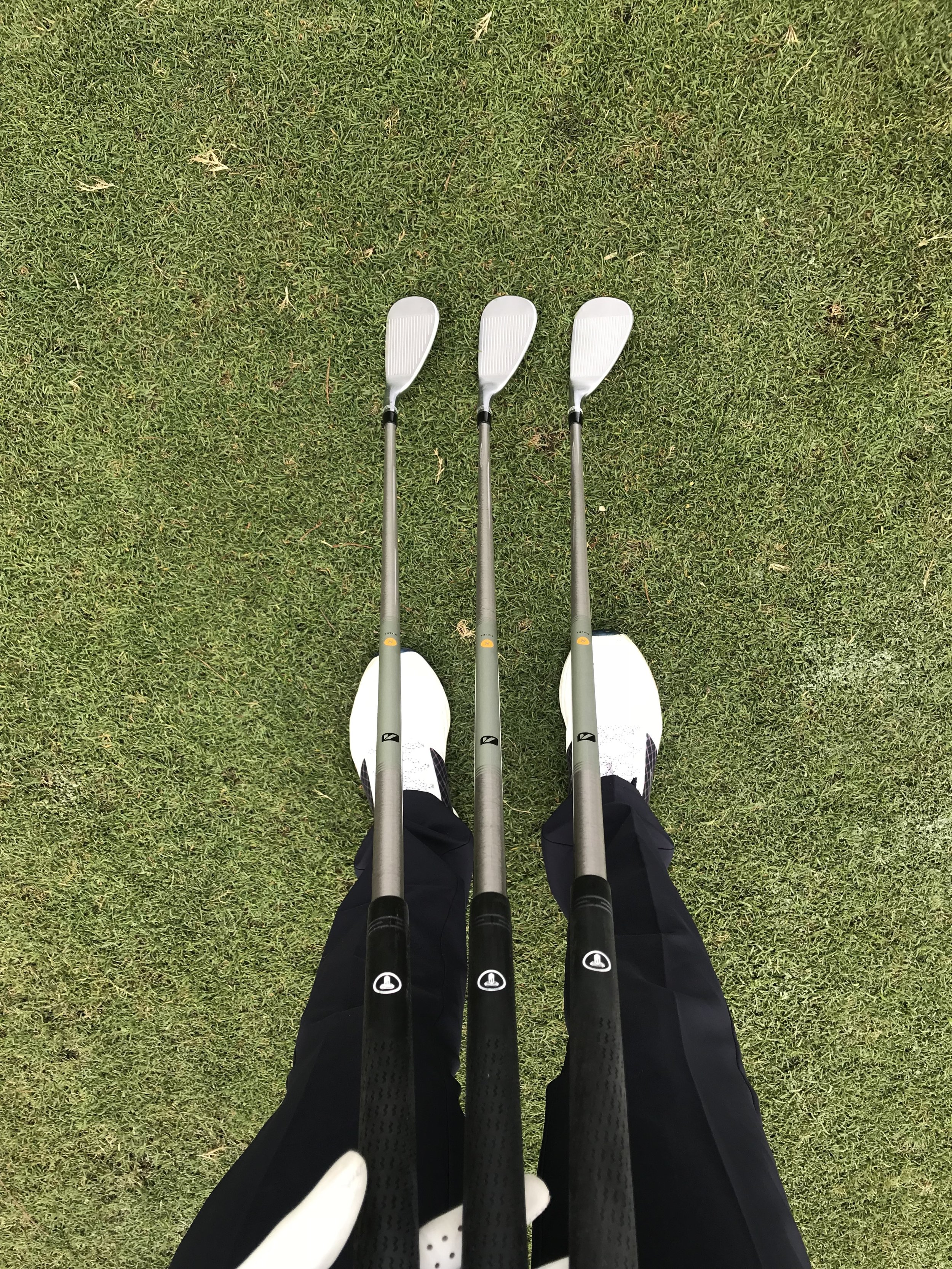MY REVOLUTIONARY CLUB FITTING
It is important to show the `inside the ropes´ of our lives, with its accomplishments and struggles, not only to become more transparent with our fans, but also to help you guys grow the game of golf - or your game of golf - learning from our mistakes and how we try to improve them.
I enjoy being a spokesperson and role model through my sport. I enjoy sharing tips, experiences, learned lessons and my likes and dislikes. Its a vicious cycle, because the more I share the more compliments I receive from you guys, appreciating my commitment to helping you become a better golfer, or having a more active lifestyle. I have role models as well; people I look up to for guidance and inspiration. They don't have to be athlete, or don't have to be famous. I like to see what works for them and why. And then propel from that inspiration to find my own path. It´s a passive-active nurturing technique I have to grow not only as a person but as an athlete. And I only hope my experiences help you find your own guidance.
This week I want to talk about club fittings and why I strongly believe is very important for amateur golfers.
Golf is already hard as it is to make ourselves play with clubs that don't help our game. A golf club can significantly heighten your misses, it can hinder your performance and mess up your confidence. It also has the power to, consequently, increase your confidence by enabling your swing changes to be easier and be more forgiving. Contradictory to the saying ´blame the Indian not his arrows´, in golf; the `arrows´ play a very important role in your development as player.
When I talk about this with amateur golfers, they often reply that they are not good enough to pay for a fitting. But yet, they still spend a lot money on new clubs just because either the marketing of the club was excellent, a friend of them has it and its playing very well with it, or it is a good looking club. Multiple times I have heard from amateur golfers that they are not sufficiently consistent with their swing to get fitted, being scared to waste money in a set of new clubs they might hit well that day but not the following. But I differ from this mentality, I actually believe white the opposite. I think even though you are not consistent, every has as swing pattern. And if you have a coach, that coach will provide you with tools to help you fix your swing to get you from point A to point B. And more often than not, these swing changes are very hard or almost impossible to accomplish with the wrong clubs.
I used to do my club fittings the first days of pre season training (first week of January) but last year I changed up my strategy. My coach, Jorge Parada, convinced me to do it right after my season was over, that way I could have my clubs ready when I came back from vacation and be able to use them during my pre-season training. I only have time to do a full club fitting once a year, but through out the season we have routinary check up for our club lofts and lies. On tour, we have a fitting van that travels with us to make sure we are taken care of in that department.
Since I started doing `free agent' club fittings I have always chose True Spec in Miami, at Trump Doral. True Spec has grown exponentially throughout the world, having locations in the US (Miami, Scottsdale, Carlsbad, Chicago, NYC, etc) Europe (Turnberry, UK; Sotogrande, Cadiz- Spain) and Asia (Tokyo). I like to go to the one in Miami because of the club fitter, Andy Victoriano.
Andy Victoriano @ and I at True Spec @truescpecgolf in Trump Doral, Miami.
When doing a club fitting, it is very important to let your club fitter know about your tendencies, what your misses and fears are, and what would you want to gain out of that session. In my case, I told Andy I feared the left misses, club face aiming left at set up and that I hit the ball off the toe.
I worked really hard to correct those misses during the calendar year, however, I wasn’t aware the clubs I was using, weren’t the correct ones for me at that precise moment. So I was swinging against the current. Because fighting against technology is not a good idea.
Before doing the club fitting I was using Callaway Apex CF16 irons. I love Callaway, it wasn't coincidence that I have been playing Callaway for so many years. When thinking overall as a brand, I think they make the best clubs in the market. However, I wanted to take advantage of the freedom of not being under a contract with any club company and try every brand out there. I wanted to have the flexibility to choose whichever club I was hitting best out of all the brands.
The model of irons I was playing for more than 2 years have a little bit of offset. In case you dont know, offset helps golfers hit draws. It works as a band aid to help fix slices. When the leading edge of the club face is set back from the hosel (neck of the club), the club is said to have offset. To make it easier on you guys, the shaft appears to be in front or ahead of the club face.
Offset irons, have the tendency to aim left, just because of the disposition of the leading edge of the club compared to the hosel. Therefore, that image of the club face aiming left wasn’t just a mental hiccup. It was happening over and over again. So I have been playing offset irons which is contradictory to what suits my eye. I learned how to play with them, but basically, made my existence a little bit harder. However, it is important to understand that irons without offset could be harder to hit for non experienced players.
After discussing the benefits and inconveniences of the offset, Andy came back with some forged irons (no offset), which right away fit my eye. The clubs we tried were: Callaway X Forged, Titleist 718 TMB, Titleist AP3, Mizuno MP-18 MMC, PXG 0311, TayloreMade P 790 and Srixon z 565.
I am a steep player, so playing forged irons with a very thin base, increased the digging of the club into the ground. So we needed forged irons with a wider base. That is why I had to exclude Mizuno (for example) out of the equation. My final picks were, Srixon z 565, and TayloreMade P790. I really liked the feel of the Srixon irons, but performance-wise, the TM irons had the best numbers by far. TaylorMade irons launched the ball higher and 3-5 meters longer with each club. I gained a bigger gap in distances with long irons (6 and 5) because before I wasn't able to hit them high enough to get the carry I needed. I was surprised how accurate and distanced-controlled these new TaylorMade irons were. Another curious anecdote is that with the Taylor Made irons, I was automatically flushing them right in the center of the club face.
In terms of shaft selection, we didn’t try any other shaft, because the one I have is probably one of the best shafts I have ever used. It is a very common shaft in pro women, because it is a combination of graphite and steel. I use SteelFiber 85 gr for my irons and 95 gr for my wedges. Its funny how this works, because I was always used to play with stiffer and heavier shafts growing up, and that changed fast when I joined the Tour. Playing golf sporadically to playing competitive golf almost every week of the year are two very different things. To be able to maintain a healthy swing and energy levels during your rounds through out the year, you need a shaft that you would be capable of repeating the same swing many times in a row, many weeks in a row, with the same results. The shaft I used to play before was the NYPPON 95 gr which is also very common on tour.
These Steelfiber Stiff i95 shafts are from my wedges, which normally they have to be heavier than your irons for more control. My irons shafts -starting from my PW to 5 iron- are the Steelfiber Stiff i85.
Fairway woods came next. Pro golfers are a bit stubborn when it comes to recognizing the necessity for some of us to introduce a 7 wood in our bag. But I came to this club fitting session with no prejudices and a very open mind.
If I wanted to get a 7 wood in my bag I needed to compare numbers with a 4 iron. Because those two clubs are forever substitutes of each other. Normally you carry both in the bag and use the 4 iron in windy conditions and the 7 wood in normal condition with firm greens. However, I wasn’t laughing the ball high enough with my 4 iron and consequently, wasn’t carrying the distance I needed and also wasn’t spinning the balls enough to bite on greens.
Luckily, I never had a problem in hitting the ball low, so I can manage to hit low spinners with my 7 wood if needed. So, no 4 iron for me on the bag.
Among some of the fairway woods brands I tried were TaylorMade, Callaway, Mizuno, Ping, PXG; but Ping G400 gave me the best numbers, best consistency and it was also the easiest to hit. The shaft I had on my hybrids was Fujikura PRO 63 S, so we decided to go with the newer Fujikura model of those shafts, the ATMOS 6S.
Before I continue onto my Driver, it is important to mention that when doing a club fiiting, the idea is not to modify your swing for the club in hands. The purpose of a good club fitting is for you to hit your normal swing all the time, that way is how you will know which club works best for you.
For Drivers, we tried the TaylorMade M2s, PXG, Cobra and Ping, but nothing really beat my Epic Driver. We did change the shaft, to create more torque and gain a couple more yards. The shaft I changed into is MCA FUBUKI J 50 S.
For wedges, I changed from the Callaway MD3 Milled to the TaylorMade milled grind 58, 54 and 50 degrees on D2 swingweight. I am definitely going to miss Callaway´s star Anthony Taranto and his designs on my wedges a lot!
We finished up with a putter fitting. The way they do this, is by making you hit on a tracking device for putting only called Quintic Ball Roll Sytem It tracks your swing path, where you hit in your club face, the speed on your take away and follow through, how is your face at impact, etc. I got fitted into the Bettinardi Studio #28. I had never tried Bettinardi before!! The Quintic Ball Roll named a couple of things I needed to get better at. It alarmed us on one thing: I wasn't hitting the ball on the center of the putter. That I was aware of because I felt it when I hit. I was using a blade putter before, and we tried many different shapes of putter, more face-balanced putters than any others, to try and get advantage of the head weight distribution that the mallet putters have the more forgiveness they usually provide. The Quintic Ball Roll also pointed out about my left aiming tendencies, which was corrected the second the put a center-shaft putter in my hands. With all this, I am not trying to say that Voilá! I am going to start making all of the putts now. Nope! I still need to put the work in, more than anyone probably, but it will surely help me focus on more important things like speed and competition drills than technique drills to start my ball on line.
Overall, I want to address the importance on doing a club fitting to help you find the correct clubs for you. This will help your golf significantly. It might not fix your slice or draw, but it will help you fix your misses on your own allowing your instincts and talent. Its the most natural way of letting you hit the good or bad shots on your own, not having your club hit it for you.
And again, I am not sponsored by TrueSpec, I don´t gain anything from posting this. It is just me sharing insights on how to get better at this game of golf!
Have you guys ever had a golf fitting? Or you guys usually buy the club depending on the brand or the marketing behind it? Are you guys aware that the same driver head or fairway wood varies drastically with all the different shafts out there in the market? That is one of the main reasons club fittings are the best way to get your perfect club!
HOW TO SCHEDULE YOUR FITTING?:
Call : 844-729-8809 or email: info@truespecgolf.com
To find a location, visit: truespecgolf.com
RATES:
Full bag fitting + putting fitting: $450 Putter fitting: $150
Full bag fitting: $350 (most recommended) Driver fitting: $125
Wood fitting (2hr): $200 Wedge fitting: $125
Iron/wedge fitting: $200 Gap analysis (1hr): $125
Iron fitting: $125 Shaft only: $125
Es importante transmitir no solo las cosas buenas que nos pasan, si no también los aprendizajes que experimentamos al arriesgarnos con cualquier decisión tomada. Sobretodo en el mundo del golf durante nuestro proceso de mejora. Me parece apreciado compartir con vosotros todos aquellos momentos de aprendizaje y rutinas de entrenamiento que me ayudan a mejorar. Porque al fin y al cabo juego a este deporte porque lo amo, y no hay nada que me gustaría mas que ver que ustedes hacen crecer el deporte volviendo mejores golfistas.
Por que me parece tan importante los fittings? Para empezar, el golf es un deporte bastante difícil que ofrece una gran variedad de palos, varillas y ajustes en los mismo palos para poder ayudarte, pero que muchas veces, lo usamos a nuestra contra. Hay un dicho muy usado por todos nosotros el cual dice, ` No es la flecha, si no el indio ´, que a mi me gustaría indagar un poco más profundamente. En golf, yo creo que muchas de las veces, no solo los amateurs, pero los profesionales también, caemos en la tentación de elegir el palo que jugar (marca y modelo) en vez de dejar que el palo nos elija a nosotros. Yo creo firmamente que un palo de golf puede aumentar tu sentimiento de negatividad y duda, mientras que en su dualidad, también es capaz de lograr sentirnos llenos de convicción y positivismo. He visto y experimentado muchas veces, fallos que se han podido volver crónicos en un golfista (incluso para mi) y que se han ido tan fácilmente, como cambiar de modelo de palo o ajustar el palo de manera diferente a la que la tenias (ajustar el lie, por ejemplo). Esta es la sencilla razón por la cual yo pienso que en el golf, muchas más veces a favor que en contra, el dicho se diría ´Es la flecha, no el indio´.
Todo los años empieza mi temporada con un nuevo fitting, para poder probar palos nuevos y ajustes de lie y lofts. Tambien durante la temporada tenemos un chequeo rutinario de lofts y lies. Pero este año cambie la estrategia de mi fitting. Normalmente solía hacer los fittings los primeros días empezando los entrenamientos de pretemporada. Pero el año pasado, mi entrenador nuevo, Jorge Parada, me convenció a hacerlo justo antes de irme de vacaciones. Fue una brillante idea, ya que las marcas de palos suelen tardan en armarte los palos, y de esta manera, siempre vas a tener los palos listos antes de empezar tus entrenamientos preparativos para la temporada.
Es importante comunicarse con el fitter y compartir con el tus fallos, tendencias y miedos. Es crucial que el entienda que vienes buscando y cual es el propósito final de tu sesión. Despues de analizar tu swing, vendrá con una variedad de marcas de palos para que puedas empezar a probarlos con tu swing natural. Es muy importante que no cambies tu swing dependiendo del modelo o marca de palo que tienes en las manos. Ya que la idea aquí es deshacerse de prejuicios y quedarse con los palos que mejor nos vayan. Yo a Andy le comenté que los fallos que mas me molestaban eran los de la izquierda, y que sentía que la cara del palo siempre me apuntaba hacia allá. También le comenté que solía con los hierros bastante en la punta de la cara del palo.
Lo primero que hizo fue mirarme los hierros, me dijo que lo mas seguro es que mis fallo a la izquierda y la sensación de que la cara de mis hierros siempre apurara a la izquierda se debiera a que mis hierros tenían offset. Para aquellos que no saben muy bien que es el offset, es una avance en el diseño del palo que ayuda a los jugadores a pegar draw mas fácilmente. Básicamente el offset hace que la cabeza del palo esté un pelín retrasada del cuello el palo (donde empezaría la varilla). Consecuentemente, el offset hace que sientas que la cara del palo apunte a la izquierda.
Basicamente, todo el trabajo que he estado haciendo con mi entrenador, podría haber sido solventado mucho mas rápido si hubiera cambiado de hierros hace un par de meses. Ojo, que no digo que me hubiera ido mejor a nivel de resultados, eso nunca lo sabremos. Pero em proceso de entrenamiento hubiera sido mas ligero y quizás mas efectivo.
Antes del fitting usaba los Callaway Apex CF 16. Me encanta Callaway, los he jugado por muchos años, y la marca y el equipo de trabajo son de mis favoritos. Pero al no estar en contrato con ellos quería aprovechar la libertad de poder probar todos los hierros y elegir el que mejor me fuera. Al final me quedé con los TaylorMade P790. Hacía mucho tiempo que no jugaba TaylorMade, y me quede muy anonadada con los resultados obtenidos con estos hierros. Todavía a día de hoy, gozo cuando los pego. Todavía me sorprendo de ver la bola volar tan alta y con buen spin, y la facilidad con la que mantengo la cara del palo cuadrada en el impacto.
En términos de varillas, no tuve que cambiar la que ya usaba ya que creo que es una de las mejores varillas del mercado. Se llama Steelfiber, en los hierro uso la de 85 gramos y en los wedges la de 95 gramos.
Las maderas de calle fue lo siguiente que probamos. Casi todos los jugadores profesionales pelamos hasta el final por no meter una madera 7 en la bolsa de golf. Y es todo culpa del ego, por que no hay nada mejor que una buena maderita 7 que te saque de apuros. La verdad que yo nunca he tenido problemas en mantener la bola baja, pero si que he tenido problemas en sacarle vuelo a los hierros 4. Así que no les costo mucho tiempo convencerme de que la madera 7 era un buen cambio para mi. Al final nos decidimos por las maderas de calle Ping. Fue la que mejor resultado nos dió. La verdad, era lo que me esperaba. Veía a muchas niñas en el tour jugando esas maderas.
De Drivers, probamos varias marcas: PXG, TaylorMade, Ping y Cobra. Pero al final ninguna sobresalió al driver Epic que ya tenia en juego. Lo único que hicimos fue cambiar la varilla. Antes usaba la Fujikura PRO 60 grams pero Fujikara sacó una nueva varilla que es la que probamos y me fue bastante bien. Esta nueva varilla se llama MCA FUBUKI J 50 S.
Los wedges también los cambié. Me gustaban mucho mis Callaway MD3, y voy a echar de menos a Anthony Taranto, que era el artista que diseñaba los wedges con colores y dibujos. Pero los nuevos wedges que estoy usando ahora son la bomba! El toque es más suave y blando, y el diseño de la cabeza es más redondo. Con los wedges Callaway, me solía enterrar bastante, y el toque no era muy sólido. Con los nuevos wedges le pego mas en el centro del palo. El peso está mejor distribuido en la cara del palo, y soy capaz de pegarle mas neta.
En resumen, espero convenceros de la necesidad y eficacia de los fittings de palos de golf. No es algo que los profesionales debamos de hacer solo, si no al revés. A los amateurs les ayudaría mas aún ya que tienen menos tiempo para perfeccionar su swing y necesitan que de verdad el palo de golf esté en sincronía con sus habilidades de swing.
Os habéis hecho algún footing the palos de golf? Qué os ha parecido? Tendéis a compraros palos de golf por la marca, o probáis varios modelos y marcas y elegís luego? Os dais cuenta de la cantidad de varillas distintas que hay en el mercado y que cada una puede variar exageradamente para bien o para mal de las otras?


